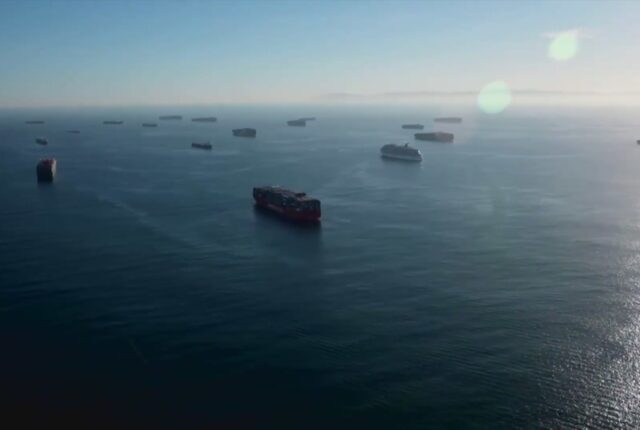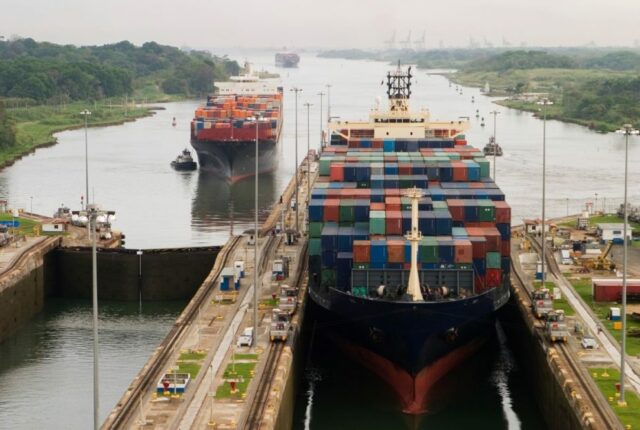
Tariff Detente Boosts Global Growth Outlook, Says IMF
The world economy isn’t out of the woods, but easing trade tensions mean a more favorable forecast
Risks from the trade war remain, but the road ahead for the global economy has turned brighter this summer, the International Monetary Fund said Tuesday.
Since the IMF’s previous forecast update in the spring, President Trump has walked back some of his more extreme tariff proposals, easing tension and nudging growth prospects higher, the IMF said. And global commerce has held up better than feared—in part because a rush to do business ahead of tariffs sparked a flurry of trade earlier this year, the IMF reported.
That resilience should be enough to sustain global economic growth of 2.7% in 2025, comparing this year’s fourth quarter to last year’s, IMF economists wrote. That is up from 2.4% in the last outlook, issued in April.
The IMF forecast doesn’t consider the effects of trade deals the U.S. just struck with the European Union and Japan, which include a baseline tariff of 15%.
Trade ruptures are still taking their toll, curtailing cross-border business and creating uncertainty, the IMF said. Its forecast this year would still be a step down from global growth last year, at 3.6%. The IMF’s forecast assumes tariffs will stick at current levels, and warns the outlook would darken again if Trump follows through on threats to raise tariffs further next month.
But the trajectory has improved since April. In addition to this year’s flood of pre-tariff trade, generous government spending in Europe and the U.S. has added to those economies’ momentum. Financial support from soaring asset prices and a weaker U.S. dollar is helping to grease the gears.
Economic resilience looks broad based around the world, the IMF said. The U.N. financial agency projected the U.S. economy will grow by 1.7% this year, Europe’s by 0.7% and China’s by 3.8%. Each of those figures would be a downshift from last year’s growth pace but better than many prognosticators had feared when Trump revealed the breadth of his tariff plans in April.
The Commerce Department’s report on second-quarter U.S. growth is due Wednesday.
The U.S. and China saw some of the most significant upward forecast revisions, largely in recognition of a tariff truce the two countries reached in June. The U.S. will also get a boost from the budget deal Trump signed earlier this month, with the biggest benefit flowing from better incentives for corporate investment, the IMF projected.
In Europe, big government-spending plans in Germany and an exceptionally strong start to the year for the Irish economy have improved the growth trajectory. Relative to expectations, steering well clear of a European recession has been a relief, said Gilles Moëc, chief economist at AXA Investment Managers.
“I would define 2025 as a mediocre start to the year, but everyone was so worried that a mediocre start is probably OK,” Moëc said.
Financial markets have provided an important lift. Broad stock indexes in the U.S., Europe and Asia have all marked healthy gains so far this year, helping businesses raise capital and—given high levels of stock ownership in the U.S.—supporting American consumers’ budgets.
A weaker dollar has also been a boon given how many foreign governments and companies borrow in the currency, the IMF said. The WSJ Dollar Index, which tracks the dollar against a basket of other currencies, is down 6.9% so far this year.
The IMF still sees the global economy as vulnerable, especially to further trade-war escalation. If the White House follows through on a threat to ratchet tariffs back up to April levels as soon as this week, growth around the world could decline by 0.2 percentage point, the IMF projected. Other U.S. tariff threats, such as new levies on copper or pharmaceuticals, would exacerbate the damage, it added.
The IMF’s view that a tariff détente could boost the global growth outlook offers a positive signal for freight logistics. Reduced trade tensions may encourage higher cargo volumes, smoother supply chain flows, and improved market stability for transport operators worldwide.
Source: Article






